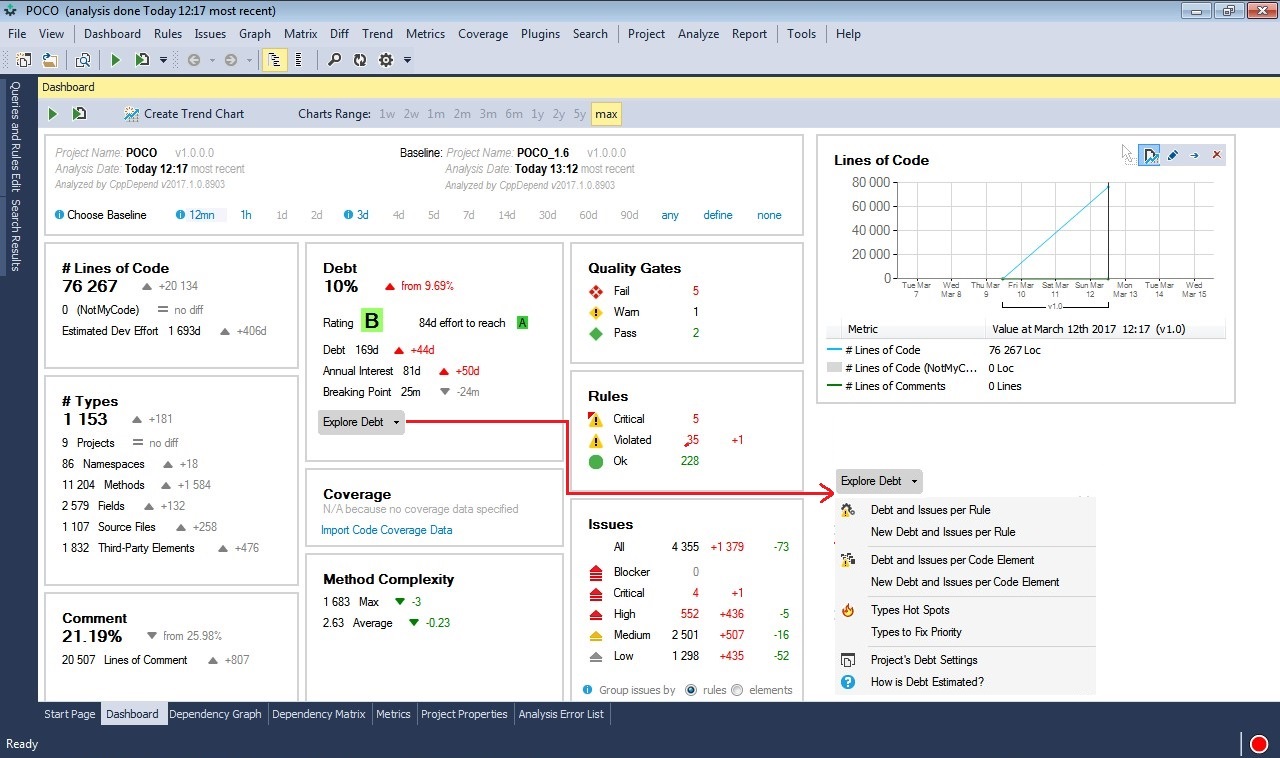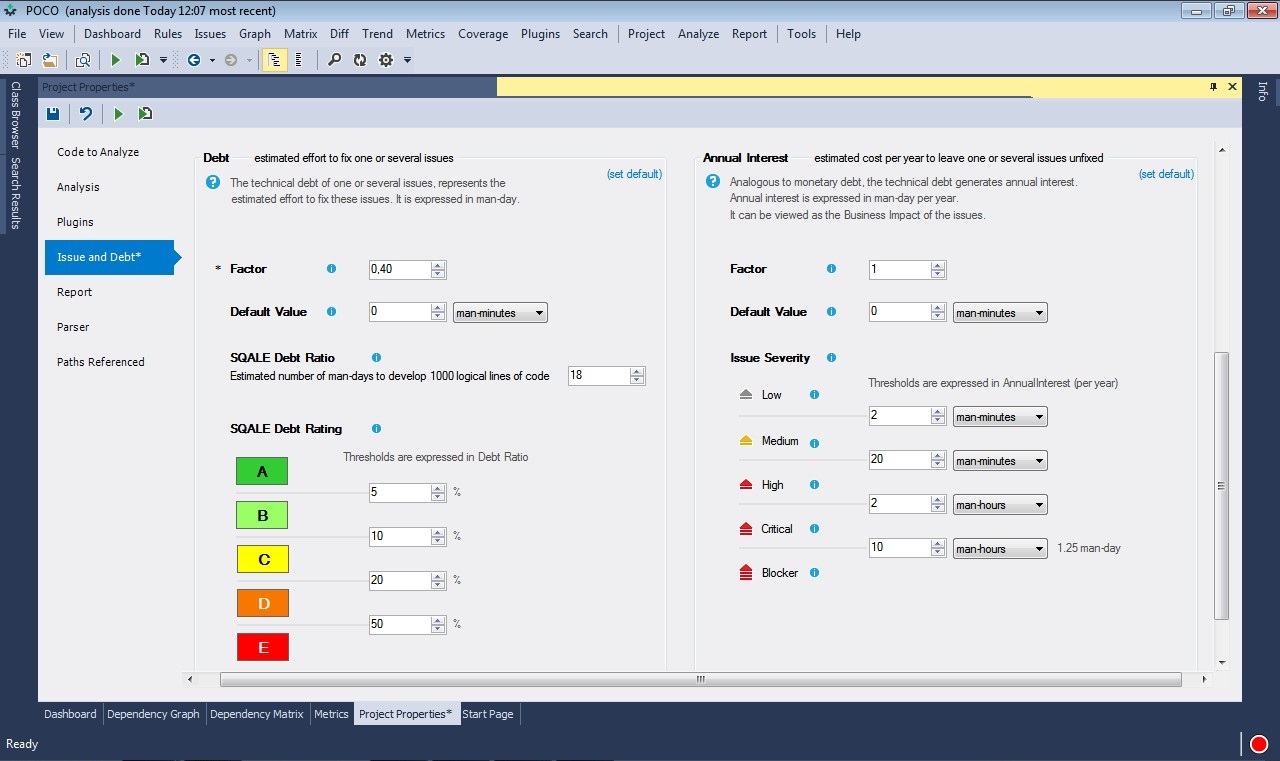Tackle Technical Debt Effectively with CppDepend
Nowadays, the technical-debt metaphor has been widely adopted by the software industry. It was coined by Ward Cunningham in 1992.
This reference article by Martin Fowler describes the technical-debt metaphor in great detail. To quote M.Fowler:
In this metaphor, doing things the quick and dirty way sets us up with a technical debt, which is similar to a financial debt. Like a financial debt, the technical debt incurs interest payments, which come in the form of the extra effort that we have to do in future development because of the quick and dirty design choice. We can choose to continue paying the interest, or we can pay down the principal by refactoring the quick and dirty design into the better design. Although it costs to pay down the principal, we gain by reduced interest payments in the future.
As from CppDepend v2017.1.0, CppDepend estimates the technical-debt of a code base. The tool proposes many unique features to handle the technical-debt the right way:
- Smart Technical-Debt Estimation: The technical-debt is estimated from C# LINQ formulas embedded inside each rule source code. This makes the the estimations both smart and easily customizable to your needs.
warnif count > 0
from m in Methods
where m.CyclomaticComplexity > 10
select new {
m,
m.CyclomaticComplexity,
Debt = (3*(m.CyclomaticComplexity -10)).ToMinutes().ToDebt(),
AnnualInterest = (m.PercentageCoverage == 100 ? 10 : 120).ToMinutes().ToAnnualInterest()
} - Quality Since Baseline: Recent code smells introduced since a baseline, that should be fixed before committing any code to source control, are highlighted in Visual Studio. They can then be fixed even before reaching the source server.
- Debt Exploration: Not only are C# LINQ queries against the CppDepend.API used to write code rules and technical-debt estimations,
but such queries can be used to explore the technical-debt. For example the query below will return new issues since baseline ordered by decreasing debt-estimation.
from i in Issues
where i.WasAdded() && i.Severity.EqualsAny(Severity.Blocker, Severity.Critical)
orderby i.Debt.Value descending
select new { i, i.Debt }>The user doesn't have to write these debt-exploration-queries since they are generated by clicking values and menus in the Dashboard:

- Fastest tool on the market: Because developer time is invaluable, we made CppDepend fast, very fast: the technical debt can be re-estimated after each compilation in Visual Studio in just a few seconds, even for hundreds of rules passed on a very large code base. And, as we know it is also important, without any noticeable IDE slow down.
100% customizable: Not only every facets of the debt estimation are customizable, but also the debt presentation is customizable too. Debt values can be estimated through money-amount instead of person-time and all thresholds can be adjusted in a few clicks through the CppDepend Project Properties panel.

- Frictionless integration of serious Code Quality control in the development process.
- Over time developers get educated about rules to follow, and the right decisions are taken early.
- Since quality is checked automatically and continuously with a strong focus on recent changes, both in Visual Studio and in the DevOps, the team builds better code.
- Executives can control the return on investment made on quality.
Benefits:
Related Links::




